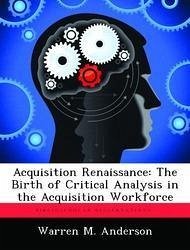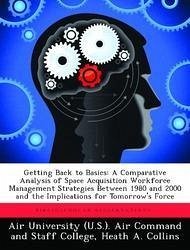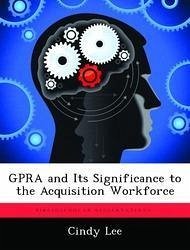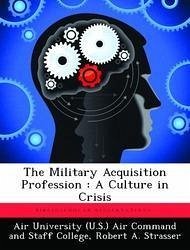Nicht lieferbar

Acquisition Renaissance: The Birth of Critical Analysis in the Acquisition Workforce
Versandkostenfrei!
Nicht lieferbar
In his article, "The Military-Technical Revolution: A Preliminary Assessment," Andrew F. Krepinevich, Jr. suggests "an adaptive, flexible, and innovative acquisition system will become increasingly important as the rate of technological change increases."1 Indeed, how can we make systems acquisition more efficient and effective? The current acquisition reform effort is an excellent beginning to addressing the issue. However, more must be done to hone the skills of the acquisition workforce to meet the challenge of implementing acquisition reform successfully. One can employ two tools from the ...
In his article, "The Military-Technical Revolution: A Preliminary Assessment," Andrew F. Krepinevich, Jr. suggests "an adaptive, flexible, and innovative acquisition system will become increasingly important as the rate of technological change increases."1 Indeed, how can we make systems acquisition more efficient and effective? The current acquisition reform effort is an excellent beginning to addressing the issue. However, more must be done to hone the skills of the acquisition workforce to meet the challenge of implementing acquisition reform successfully. One can employ two tools from the study of military history and theory to meet this requirement. First, one could adapt the Doctrine-Strategy Relationship Model to clarify the relationships between the myriad of acquisition reform initiatives, resulting acquisition policy, requirements generation process, and budget process. A second tool, Carl von Clausewitz's critical analysis, provides the mechanism to thoroughly evaluate the implementation of acquisition reform and to determine the applicability of lessons learned from recent acquisition experiences to future acquisition programs. Together these tools are important in improving acquisition program execution. Ultimately we will challenge the acquisition workforce to educate themselves using these tools in the planning of, during, and following an acquisition program. This emphasis on individual development and education indeed makes this an age of acquisition renaissance.











